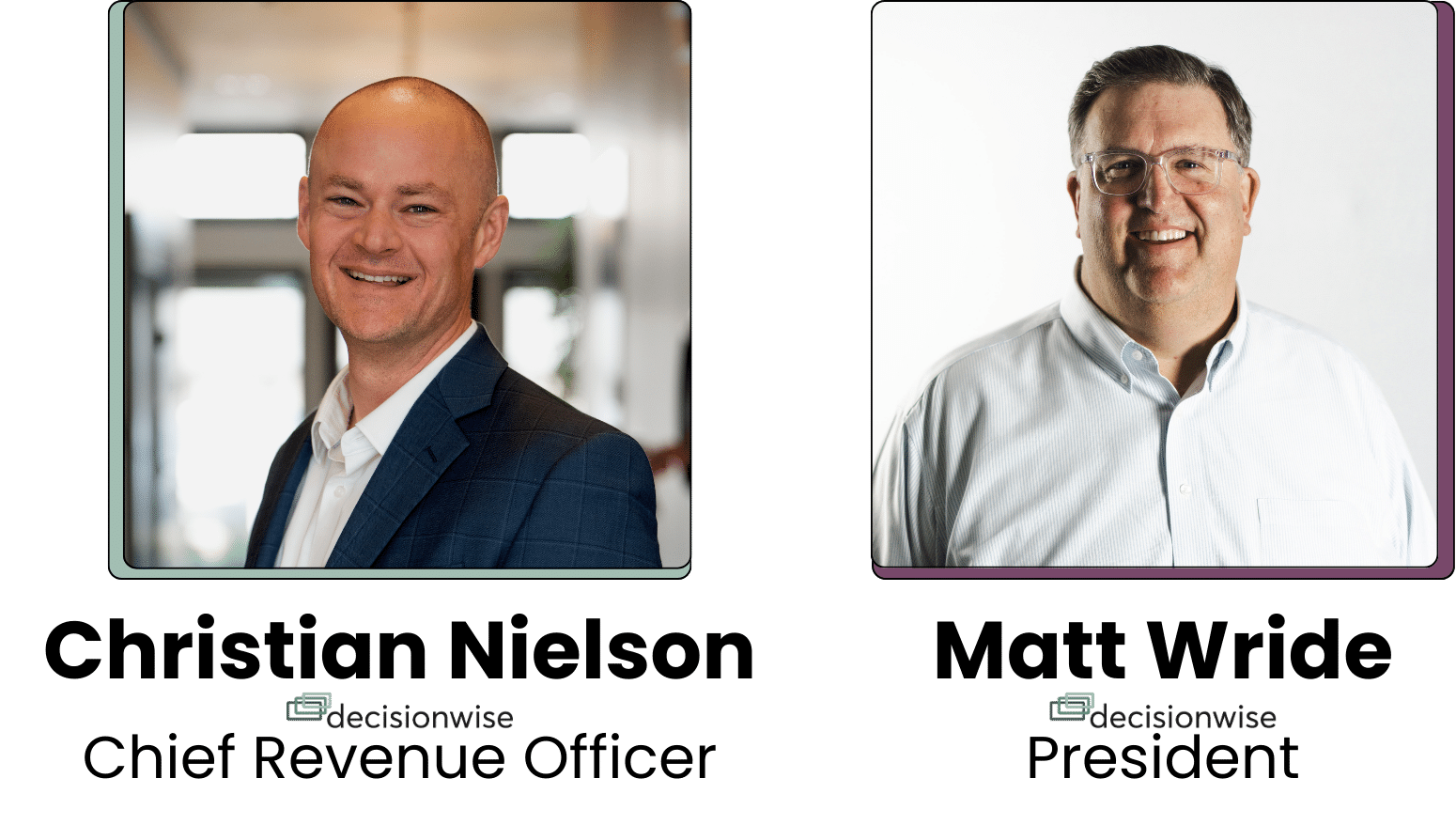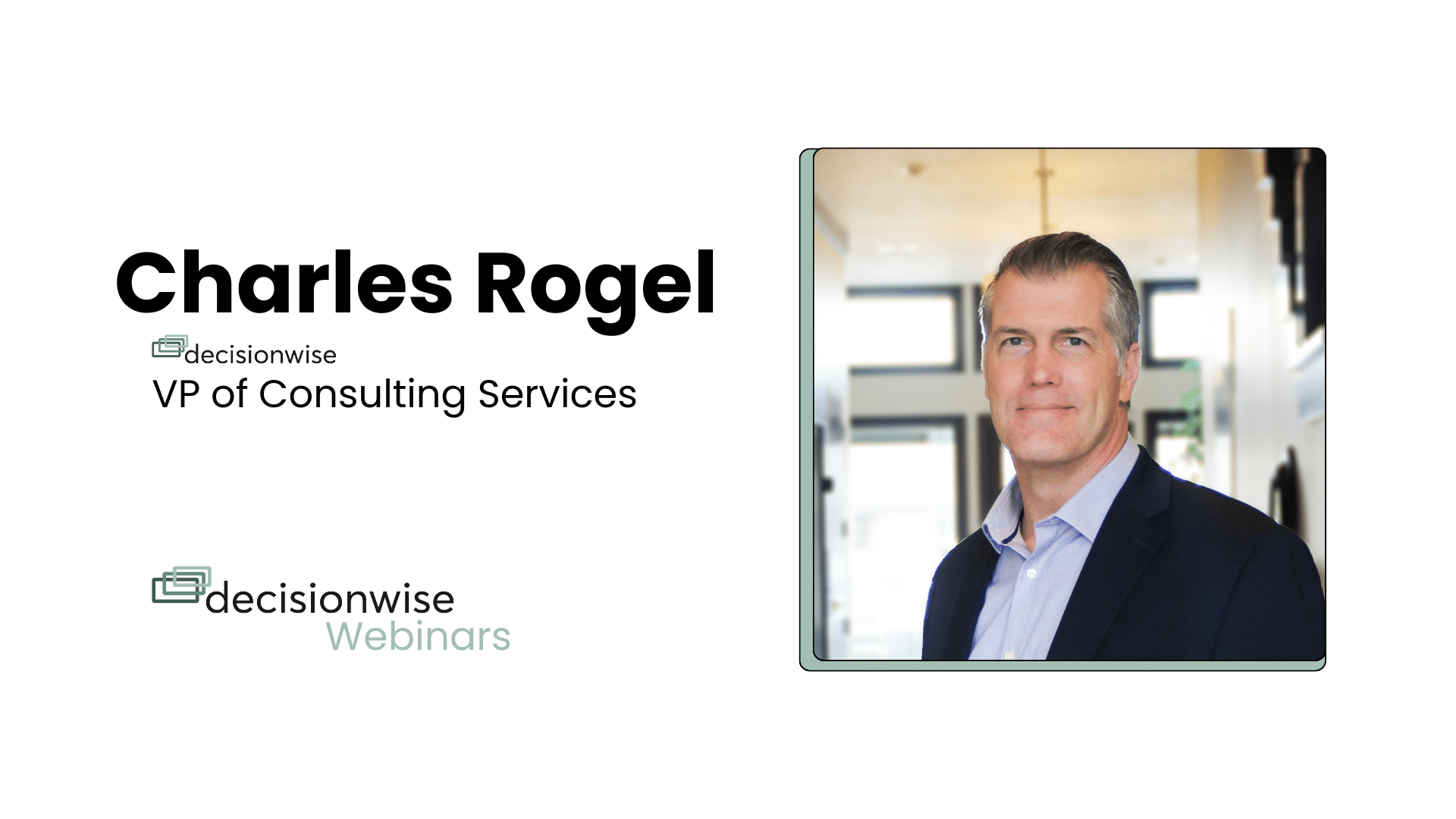Impact is about results. It’s incremental progress toward a goal, and small wins that lead to big outcomes. Each employee needs to see how their work is contributing to their individual goals, the success of the team, those whom they serve, and the organization of which they are a part. It’s the difference between simply showing up for work and knowing that we’re an integral part of the day’s operations.
The DecisionWise employee engagement survey results show that managers consistently fail to recognize employees for their contributions. These same survey results often tell us that many employees don’t see how the work they do translates into results. They spend a significant part of the day spinning their wheels. However, we find when leaders define goals, set clear expectations, measure and acknowledge progress, and help employees see that progress, employees are far more likely (and able) to contribute to the organization’s success.
Connection Between Impact and Meaning
Impact and meaning are both closely correlated. When looking through the lens of the employee, meaning helps me clarify “the why” I do the work. With impact, I see “the what” or the results of my work. The combination of these two ENGAGEMENT MAGIC® keys are very closely correlated as you can see that with this train of thought, “why am I doing something? I’m doing something to have an impact.”
When Dr. Tracy Maylett studied the DecisionWise survey data and published the book, “ENGAGEMENT MAGIC®: Five Keys to Unlock the Power of Employee Engagement,” impact and meaning were distinctive enough ideas to stand alone and have their own focus. On the DecisionWise employee engagement survey there are specific questions measuring both meaning and impact.
A Personal Approach – Managers and Employees
The manager or supervisor has the responsibility to create an environment where employees can see the impact they are making. Managers should create goals, a unified vision, and measure the way employees can see the impact of their work.
The employee has the opportunity and the responsibility to make the choice to engage in that environment created by the manager. Employees must understand and be committed to the organizational and team goals. If employees can’t see the impact of their work or the end-state of it, then they should ask their manager/organization for more clarity around how their work impacts the overall goals and strategy.
Like the other keys of employee engagement, impact is a 50/50 proposition. Management creates the environment; the employee makes a choice to engage or not.
Celebrating Success
Many people, especially people that are “successful,” have achieved their success by setting high goals, attaining them, figuring out what wasn’t working for them, and then closing that gap. Unfortunately, I often see people stuck on that pattern that they can’t or don’t celebrate the progress they make. They’re always talking about what’s next and not taking the time to recognize their impact.
It’s an interesting paradox because you always want to set goals but then you don’t want to just achieve the goal and then immediately set the next set goals without celebrating some success. A proper balance is setting the goals and then taking the time to celebrate success of achieving the goal.
Manager can play a big role in slowing employees down and saying, “Hey, you did this and thank you. What did you learn from that?” We don’t just learn from experience, we learn from the debrief of experience. We learn from not just achieving the goal, but the growth along the way and the adjustments made.
We can slow down in that process of debriefing, see the impact we made, see what we learned, make some adjustments and then set the next goals. But there needs to be some element of slowing down and reflecting.
Rewards and Recognition
If you want your employees to know the impact they are having, then you have to be clear on your vision, goals, and objectives. A manager should also create an environment where impact can be measured. When a manager defines the target, and how it will be measured, employees can more easily define personal goals aligned with the overall objectives. If employees don’t have goals, it’s difficult to recognize their progress, redirect when off track, and celebrate when the goal was achieved.
In terms of impact, managers should align goals, rewards, and expectations. Be clear on what you want to achieve, set the context, set the goal, and provide feedback along the way. This feedback includes both reinforcing feedback: “You’re on the right direction” or redirecting feedback, “You need to make some adjustments.”
External Factors That Create Impact
When I think about external factors that create impact, I’m reminded of Habitat for Humanity. They are such a great illustration of being able to see the results of your work and the impact you get when you volunteer with them. You’re doing something for a good cause. But then by the end of the day you actually have built something: you may have finished a house, or at least put it in a window or a door. You’re able to see your impact connected to the whole. “Someone’s going to be able to be able to live in this house. And it’s from something that I did.”
So that’s a great example of connection on both an individual basis (“I have these goals. I want to help”) and this bigger context around external factors, in building houses for people. Even bigger than that, individuals feel they are helping with this cause. It’s a great example of how all of those connect.
Impact Drives Engagement
We work with many manufacturing companies with employees on an assembly line (literally or proverbially). When employees feel like they’re just putting their one piece into this bigger puzzle and can’t see a connection to the end result, it is often hard for them to feel engaged and see the impact that their work is having.
One solution we’ve found is to simply just get people out of the production line and see what comes out at the end, whether it’s a phone or a microchip or a car; to see that end result. As a manager, it’s very important to be aware of that so your employees see that entire life cycle of a product and the effect on the customer
Effort and Impact
Lastly, keep in mind the relationship between effort and impact. If you put in a lot of effort but don’t see a lot of impact, you will get into a burnout situation– which can lower your motivation to do your best work. On the other hand, if you’re not putting in a lot of effort and you’re not having much impact, you may create an apathetic mentality. Or, you could be putting in low effort and getting higher results, but it’s so easy that it doesn’t energize you.
When you find the place where you put in significant effort and you see that impact of your effort, that’s the definition of how impact creates engagement. That’s the environment we are always seeking; to find that place with managers and employees where you’ve got the right balance between impact and effort.
Listen to the podcast recording on impact.
Consider surveying your employees to see how meaning is impacting overall engagement.




